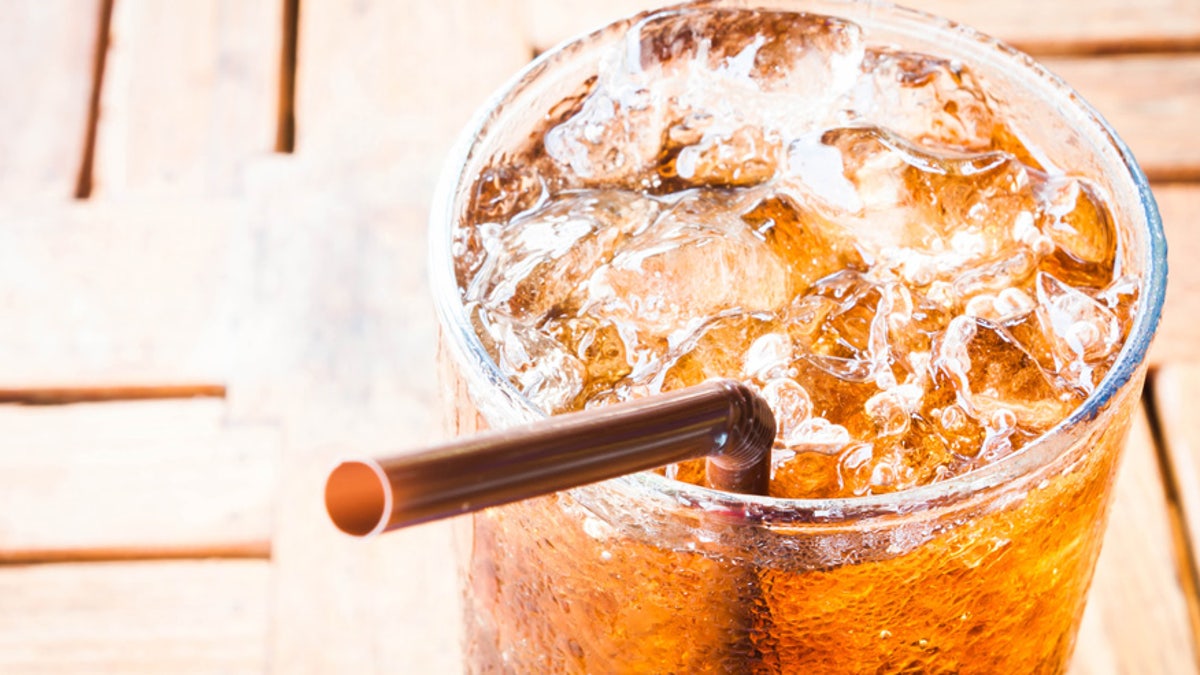
The origin of cream soda is pretty surprising. (iStock)
One of the best, most underrated ways to waste, like, a ton of time is to read the Wikipedia entries on totally ordinary things.
The other week, bored and avoiding work, I decided to read the entry on cream soda. I wanted to find some weird, interesting things about where it came from, and the eccentric Brooklyn immigrant who invented it. It turns out to be much weirder than I expected, because cream soda, without the technical identification of the flavor in the name, is not the same cream soda everywhere.
I had thought cream soda, like root beer or orange soda or cola, would be made slightly differently by various bottlers but would always be: vanilla flavoring, pretty sweet, and somewhere on the color spectrum from clear to brown to reddish.
This, as it turns out, is not the case at all.
The very first recipe for a beverage called cream soda was written by someone named E.M. Sheldon and appears in an 1852 edition of Michigan Farmer. It includes the following ingredients: water, cream of tartar, Epsom salts, sugar, tartaric acid, milk, and an egg.
More From Bon Appetit
It sounds both extremely gross and completely unlike my idea of cream soda: It has no vanilla, and the addition of milk makes it more like an egg cream (traditionally seltzer, syrup and milk). The idea of boiling a beaten egg in a syrup has no place in my conception of a soda or anything else intended for consumption.
Theoretically, this cream soda has its own history; there is a long tradition of carbonated beverages with whipped egg whites and various flavorings. It's possible that the cream in the name comes from the cream of tartar, an ingredient that both stabilizes whipped egg whites and prevents syrup from crystallizing.
But I’m not entirely convinced that this cream soda has any connection with what we now know as cream soda. In 1868, a physician named Dr. Brown (his first name is unknown) began selling a line of sodas in his native Brooklyn before expanding to selling bottles in 1886. These sodas included celery, black cherry and ginger, most of which were alleged to have some kind of elixir-like health benefits. (After a few decades, the FDA forced him to stop advertising his sodas as medicine.) Also in that first wave of Dr. Brown’s soda flavors: cream soda.
Dr. Brown’s cream soda, then as now, was flavored with vanilla and pale tan in color.
“I don’t think that vanilla, as a flavor, was really available to people for a long time,” says Gia Giasullo, the author of "The Soda Fountain" and the owner of Brooklyn Farmacy and Soda Fountain. “It was a luxury spice.”
In the 1930s, vanilla extract, especially the invention of synthetic vanillin (the primary flavor in vanilla) made cream soda, and vanilla-flavored anything, much more accessible. Cream soda began to pop up all over the U.S. and all over the world. In the U.S., the variations mostly were in color; Barq’s is brown, A&W is tan, Jones is clear, but they’re all essentially the same flavor. Internationally, that’s not the case.
In Canada the most popular cream soda is made by Crush. I asked some Canadian friends what it tasted like.
Here’s what they said: “Bright pink. Pink flavor.”
Canadian cream soda is not really vanilla-flavored in the same way that American cream soda is; instead, it’s an intensely sweet, almost cotton-candy-type flavor. (There are versions of this type in the U.S., too; Big Red, a bright red cream soda, is less vanilla-y and more cotton-candy-y.) Frescolita, a red Venezuelan cream soda popular throughout Latin America, is bubble-gum-flavored. Bickford’s in Australia is described online as having a bubble gum–raspberry flavor. Sparletta creme soda from South Africa is neon-green and described as floral.
John Nese, who owns the historical mecca of all things soda that is Galco’s Soda Pop Stop in Los Angeles, has tried almost all of these.
“When you taste them, they all have a cream finish on them, no matter what the flavor is,” he says. “You can get a raspberry or a bubble gum or whatever it is, but it just has that real smooth finish on it. You know it when you taste it.”
And that “cream finish” is coming from one source. According to some studies, vanilla can actually trigger us to identify a flavor as creamy without any textural changes at all. A 1992 study showed that when vanilla flavoring is added to 1 percent milk, the perception of that milk’s “creaminess” shot up, even as the actual milk fat content remained the same.
So the name cream soda doesn’t come from dairy; it comes from that sneaky luxury spice that’s come to signify boring, bland, predictable: vanilla. But I have a feeling cream soda lovers would say it’s nothing of the sort.




















